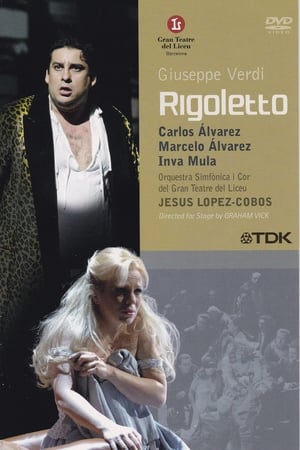Rigoletto
Graham Vick2004-12-01
0
0 min
In Rigoletto, the deformed figure of the hunchbacked jester at the Mantuan court acts as a foil to his cynical and powerful master, an unscrupulous philanderer contrasted with his cruel and unforgiving fool. Rigoletto encourages and welcomes the Duke's conquests, pitilessly mocking his victims until he discovers that the Duke has abducted the one person he genuinely loves, his own daughter. As a result, the character of the court jester is transformed into a tragic figure who, in spite of his evident immorality and malice, allows us to sense the devotion he feels for his daughter and his horror at being destroyed by the same despotic world as that which he himself has helped to create.
Cast
| Name | Character | Team | |
|---|---|---|---|
 |
Marcelo Álvarez | Duke of Mantua | Unowned |
 |
Carlos Álvarez | Rigoletto | Unowned |
 |
Inva Mula | Gilda | Unowned |
 |
Julian Konstantinov | Sparafucile | Unowned |
 |
Nino Surguladze | Magdalena | Unowned |
 |
Mercè Obiol | Giovanna | Unowned |
 |
Stanislav Shvets | Count of Monterone | Unowned |
 |
Joan Martín-Royo | Marullo | Unowned |
 |
Jon Plazaola | Matteo Borsa | Unowned |
 |
David Rubiera | Count of Ceprano | Unowned |
 |
Sandra Galiano | Countesse of Ceprano | Unowned |
 |
Sandra Galiano | Countess of Ceprano | Unowned |
 |
Vicenç Esteve | Courtmaster | Unowned |
 |
Eliana Bayon | Paggio | Unowned |
